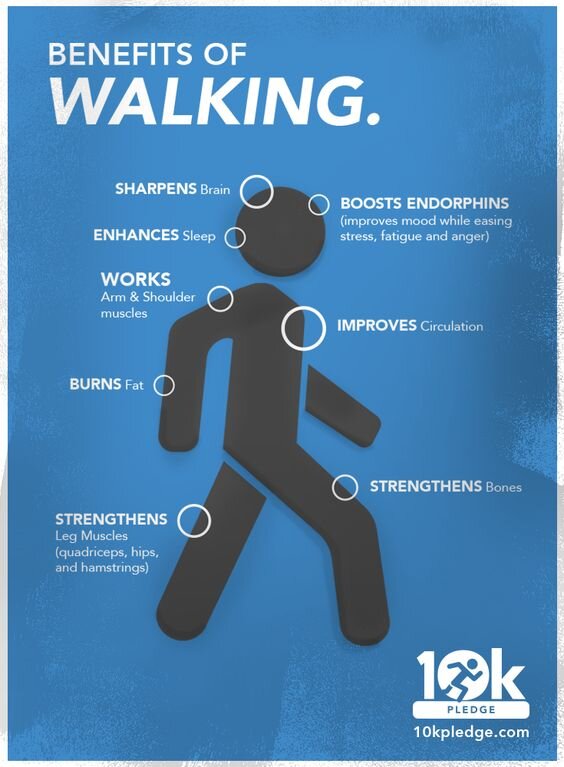Can you find your way around in a suddenly darkened room?
Try closing your eyes and point to where the door is: That’s your cognitive map at work. Your internal “GPS position” that’s silently updating as you move through space.
Walking is essential to our nature as humans. Walking upright (bipedal species) is one thing that sets humans apart from other animals.
At around a year or so of age, we make a unique transition from crawling, from being stable on all fours. We struggle upright, falling a bit, stumbling a bit and eventually walking fluidly and fluently under our own steam.
In our evolutionary history, walking upright set our hands free, allowing us to carry food and tools and children and also to point and gesture. Because we could point to predators and prey in the distance, we could look in the same direction, paying shared attention to what someone is pointing at—a capacity that demands an elaborate brain system.
Walking can be a behavioral method for preventive against depression. It benefits us on many levels, physical and psychological. Walking helps to produce protein molecules in muscle and brain that help repair wear and tear.
These muscle and brain molecules—myokines and neurotrophic factors, respectively—have been intensively studied in recent years for their health effects. Apparently these molecules act as a type of fertilizer used to assist in the growth of cells and regulation of metabolism. They also reduce certain types of inflammation.
These essential molecules are produced by movement and the increased brain and body activity created by movement. You must be moving about, placing heart and muscle under a bit of positive stress and strain or these molecules aren’t produced in sufficient quantities to perform their roles.
Movement through the world changes the dynamics of the brain; increasing the strength of the signals in parts of the brain concerned with seeing and other senses, such as touch.
There is the phrase “on the prowl.”
Walking about helps you discover things more quickly compared to merely sitting in one place.
It starts with one foot in front of the other.




